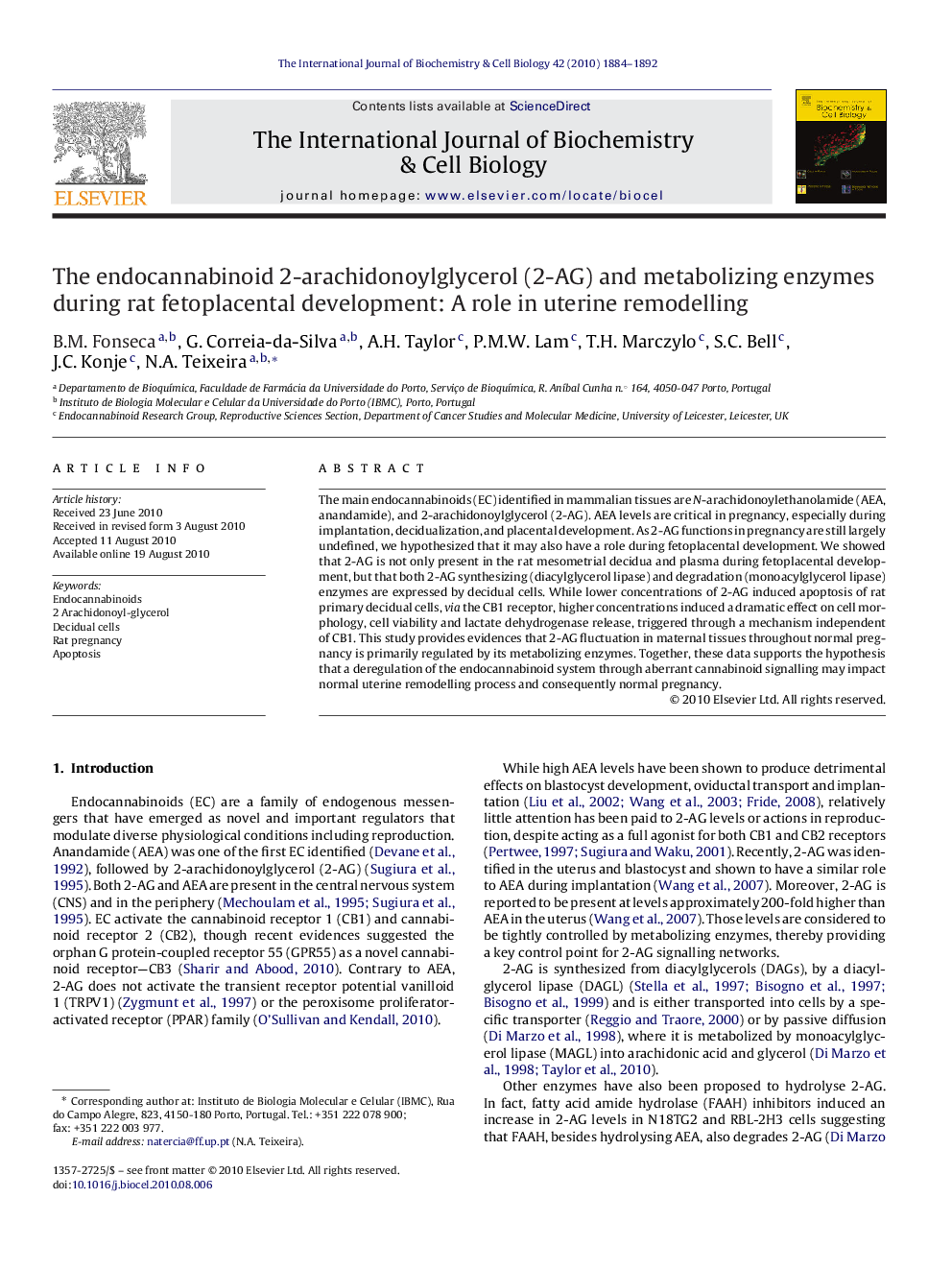| Article ID | Journal | Published Year | Pages | File Type |
|---|---|---|---|---|
| 1984313 | The International Journal of Biochemistry & Cell Biology | 2010 | 9 Pages |
Abstract
The main endocannabinoids (EC) identified in mammalian tissues are N-arachidonoylethanolamide (AEA, anandamide), and 2-arachidonoylglycerol (2-AG). AEA levels are critical in pregnancy, especially during implantation, decidualization, and placental development. As 2-AG functions in pregnancy are still largely undefined, we hypothesized that it may also have a role during fetoplacental development. We showed that 2-AG is not only present in the rat mesometrial decidua and plasma during fetoplacental development, but that both 2-AG synthesizing (diacylglycerol lipase) and degradation (monoacylglycerol lipase) enzymes are expressed by decidual cells. While lower concentrations of 2-AG induced apoptosis of rat primary decidual cells, via the CB1 receptor, higher concentrations induced a dramatic effect on cell morphology, cell viability and lactate dehydrogenase release, triggered through a mechanism independent of CB1. This study provides evidences that 2-AG fluctuation in maternal tissues throughout normal pregnancy is primarily regulated by its metabolizing enzymes. Together, these data supports the hypothesis that a deregulation of the endocannabinoid system through aberrant cannabinoid signalling may impact normal uterine remodelling process and consequently normal pregnancy.
Related Topics
Life Sciences
Biochemistry, Genetics and Molecular Biology
Biochemistry
Authors
B.M. Fonseca, G. Correia-da-Silva, A.H. Taylor, P.M.W. Lam, T.H. Marczylo, S.C. Bell, J.C. Konje, N.A. Teixeira,
